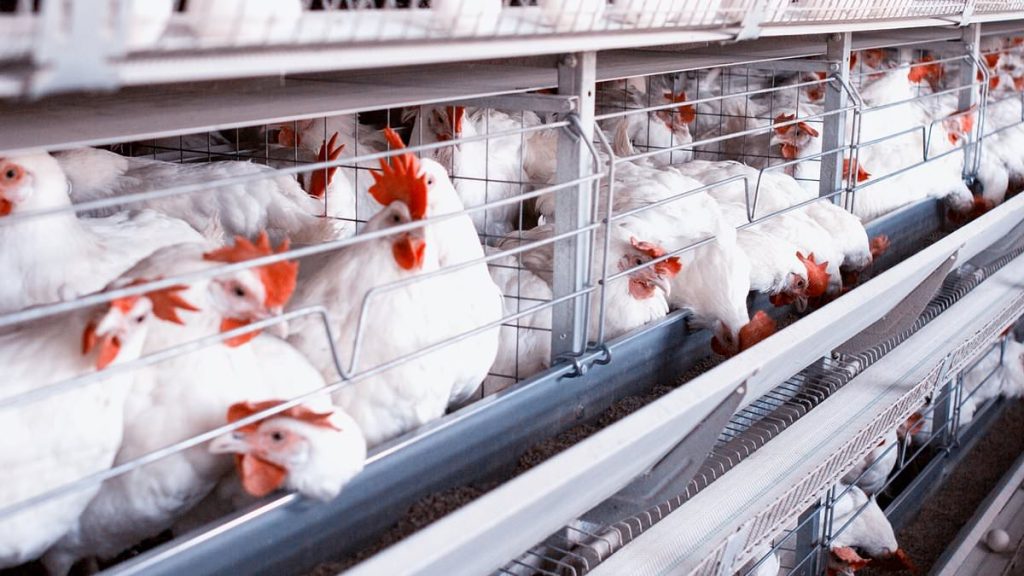By Nikki Main, Science Reporter, Dailymail.Com
Updated: July 16, 2024 18:58, July 16, 2024 19:40
Four poultry workers infected with bird flu influenza Because they did not wear protective clothing when exterminating the chickens, CDC It was revealed today.
There were three confirmed cases of infection with the H5N1 strain, also known as H5N1. Avian influenzaTests were carried out on Friday and one person is believed to be infected, but results are not yet available.
This brings the total number of human infections to nine, and experts are concerned that if the virus continues to jump between species it could mutate and become more dangerous.
They are very concerned about the spread of the virus, and the federal government Moderna – Best known for its COVID-19 vaccine – $176 million to develop an H5N1 vaccine for humans in case it becomes a national pandemic.
The Centers for Disease Control and Prevention (CDC) is investigating the Colorado cluster of cases to determine if the risk to humans needs to be updated.
Initial analysis has not shown any worrying signs that the virus is mutating to make it more transmissible between people, and the CDC is not currently recommending that livestock workers get vaccinated, said CDC principal deputy director Nirav Shah. US News.
Federal authorities said the workers were slaughtering poultry on a farm in northeastern Colorado when they began showing mild symptoms including conjunctivitis (also known as pink eye) and respiratory infections.
None of the Colorado workers have been hospitalized after contracting the virus, but they are being monitored for ongoing symptoms.
The CDC told DailyMail.com that it is sending a nine-person team, including epidemiologists, veterinarians, clinicians and industrial hygienists, to Colorado to determine whether the public health response to the outbreak needs to be updated.
“As part of this assessment, workers continue to be monitored and additional samples are being tested,” the spokesman said.
All the infected workers had contracted the virus after direct contact with poultry and Shah said the workers were not wearing protective gear while slaughtering the chickens.
“The use of PPE was suboptimal, particularly masks and eye protection,” Shah told U.S. News about personal protective equipment.
Click here to resize this module
She claimed that temperatures of 104 degrees Fahrenheit and powerful industrial fans made it difficult for workers to keep their protective face gear on.
The CDC says the H5N1 virus, also known as bird flu, Can cause serious illness And if it spreads easily from person to person, it could “cause a pandemic.”
Approximately 50% of people diagnosed with the disease die. Cleveland ClinicThis is because the H5N1 strain can cause severe inflammation in the respiratory system.
Avian flu began causing panic in Colorado in 2022 when it spread from dairy cows to humans, but has now caused the largest avian epidemic ever, killing more than 100 million birds worldwide.
of Spread of infection among humans Infections began spreading among farmworkers in March, and since then nine cases have been reported in the U.S., including four among workers in Colorado.
Two farm workers in Michigan, one in Texas and one person in northern Colorado who developed conjunctivitis after coming into contact with infected cows have been diagnosed with the disease.
All symptoms from infection are mild, and there is currently no indication that avian influenza can be transmitted from person to person.
Federal Health Authorities report The latest case is H5N1 virus It is widespread among wild birds and has caused multistate outbreaks among dairy cattle and poultry.”
United States Department of Agriculture Confirmed cases of avian influenza have been reported in 152 cattle herds so far this year.
The CDC is still investigating this outbreak. Warned “If these viruses were to change so that they could be transmitted more easily from person to person, they could potentially cause a pandemic, but so far no genetic changes have been identified that would make the viruses more susceptible to human-to-human transmission,” the public warned.
Health officials are concerned that influenza A viruses that infect birds and cattle could mutate and spread more frequently from person to person, and that new strains could spread rapidly around the world because the human immune system is not accustomed to them.
They are now considering when to deploy 4.8 million doses of the bird flu vaccine, developed by vaccine manufacturer CSL Securus.
The supplies will be drawn from pre-pandemic vaccine stockpiles funded by the Strategic Preparedness and Response Office.
“With highly scalable production methods, we are currently positioned to supply up to 150 million doses of influenza vaccine to support the influenza pandemic response within six months of a pandemic being declared,” CSL Sequilas said in a May announcement. news release.
But the vaccine Due for completion later this summerHowever, it may not be approved for use immediately, and it is still unclear how quickly the US Food and Drug Administration (FDA) could approve a vaccine for the general public.
“While CDC’s current risk assessment to the general public is low, if it is determined that the U.S. population should be vaccinated to protect against H5N1 influenza, FDA will take appropriate steps using regulatory pathways to make a vaccine available as quickly as possible,” an FDA spokesperson said. CBS News In May.
Meanwhile, the CDC Being exposed to infected birds or animals through work or other recreational activities There is a high risk of contracting avian influenza.
The report comes just one week after officials confirmed a Colorado resident had been infected with bubonic plague, a potentially deadly disease. Transmitted to humans via infected rodent fleas or by handling infected animals.
The plague killed millions in Europe in the 14th century, but is considered a rare disease in rural areas of New Mexico, Arizona and Colorado.
About 7 people become infected with plague each year in the United States.


